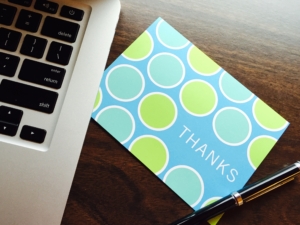So you’ve listed improving your LinkedIn profile and building your network among your 2016 resolutions — Congratulations! This is definitely a worthy goal and a valuable investment in your career.
As you work to build your brand on LinkedIn, remember that manners still matter, and will play as big a role in your professional reputation as any of your achievements.
Following are four etiquette rules to keep in mind and ensure that your attempts to grow your network and build relationships don’t backfire:
Send a personal message when requesting connections and recommendations.
LinkedIn provides a generic message for each, but if you want to increase your chances of a response, take the time to make it personal. Due to spam concerns, there are those who admit that they only respond to connection requests from people they don’t know if the message is personalized.
At worst, receiving stock messages can be off-putting, so it’s best to avoid sending them at all. Consider the difference between a handwritten note and junk mail. Which one leaves you with a nice feeling about the sender?
The message can be as simple as telling the person why you’d like to connect, such as your interest in her field or your admiration for something she’s accomplished in her career. This way, you’ll communicate that you respect the relationship enough to address her as an individual. This is especially true if your relationship is, at the deepest level, that of mere acquaintance.
And if you’re asking someone to devote time to crafting a thoughtful recommendation, it’s only fair to set aside the couple minutes it takes to write a friendly note asking for help.
Make the job of endorsing you as easy as possible.
In the case of recommendation requests, you can lighten your connection’s load by providing specific accomplishments you’d like him to highlight. It’s perfectly acceptable to offer to write the recommendation yourself (provided, of course, you allow him to edit and convert to his “voice” prior to posting). Not only does this save him time, it will likely expedite his response to your request.
You can also provide him with keywords that describe the skills for which you hope to be hired, such as project manager or engineer. An added benefit: recruiters enter these words in their LinkedIn candidate searches, so you’ll make it easier for them to find you.
It should go without saying, but if you’re planning to reach out to someone for a favor, try to establish a relationship and build trust with that person first.
Remember that LinkedIn recommendations are not quid pro quo.
Never assume that if someone asks you to write a recommendation for her, it means that she should automatically reciprocate. In fact, it may look suspicious to a recruiter if he sees that you and a colleague have written mutual endorsements. That’s not to say you can’t ask for some other career support from that person. In fact, writing a recommendation for someone is a great way to bank goodwill that might be helpful in the future.
Don’t forget — thank you notes are still required in the digital world.
Always follow up with a thank you note for a recommendation or any other free career support. A $5.00 Starbucks e-card goes a long way in expressing appreciation. Not only does it make you memorable, your connection is more likely to want to help you in the future.
Happy New Year and best wishes for career success in 2016!
Copyright 2016 Emily Wong
